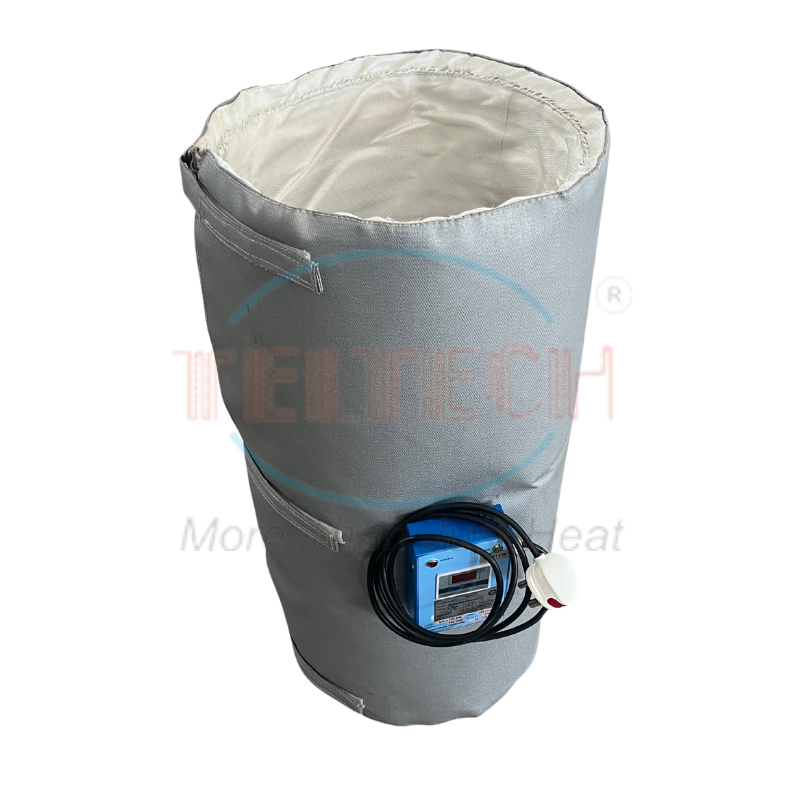
Heating jackets are flexible, insulated enclosures designed to maintain or elevate the temperature of various equipment, such as drums, containers, pipes, valves and pumps. They are widely used in industries like chemical processing, pharmaceuticals and food production to ensure optimal temperatures for processes and materials.
Maintaining process temperatures in pipelines, valves, pumps, hoppers and reactors.
Preventing solidification or viscosity changes in stored materials by heating drums, IBCs and other containers.
Controlling temperatures of samples and reagents in laboratory settings.
Heating jackets can operate at temperatures up to 200 °C, depending on their construction and materials used.
Nominal voltages vary by materia
PTFE-coated jackets: up to 500 V
E-glass (textile glass) jackets: between 300 V and 400 V
Maximum area output can reach up to 500 W/m², facilitating rapid heating and efficient temperature maintenance.
The outer layer of heating jackets is selected based on the required operating temperature:
Plastic fabrics: suitable for temperatures up to 80 °C
Aluminium-coated glass fabric: up to 160 °C
Textile glass with silicone coating: up to 180 °C
Textile glass with PTFE coating: up to 220 °C
Textile glass without coating: up to 200 °C
High-efficiency insulation materials are used to minimize heat loss, enhancing energy efficiency and ensuring uniform temperature distribution.
Integrated temperature sensors allow for precise monitoring and control, maintaining temperatures within ±1 °C of the setpoint.
Certain heating jackets are designed for use in hazardous areas and comply with CE directives, ensuring safe operation in potentially explosive environments.
Customizable to fit various equipment shapes and sizes.
Removable and replaceable designs allow for quick installation and maintenance.
Effective insulation reduces heat loss, lowering energy consumption.
Compliance with industry standards ensures safe operation in diverse environments.
When selecting a heating jacket, consider factors such as the operating temperature, voltage requirements, equipment dimensions and specific application needs to ensure optimal performance and safety.